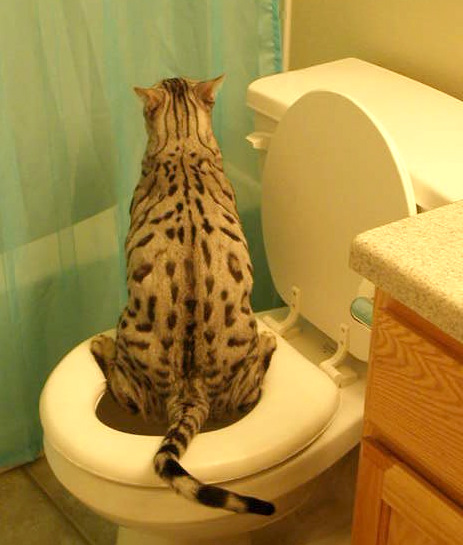What You Must Never Flush Animal Waste Down the Toilet
What You Must Never Flush Animal Waste Down the Toilet
Blog Article
How do you feel with regards to Should you flush animal waste down the toilet?

When it pertains to getting rid of waste, specifically animal waste, many individuals frequently consider the convenient alternative of flushing it down the bathroom. Nevertheless, this seemingly very easy option can have major consequences for the setting and public health. In this short article, we'll discover why flushing pet waste down the bathroom is a bad concept and give alternate approaches for appropriate disposal.
Intro
Appropriate waste disposal is crucial for keeping environmental sustainability and public health. While it may seem safe to flush animal waste down the bathroom, it can bring about various issues, both for the setting and human well-being.
Risks of flushing animal waste
Ecological impact
Flushing pet waste introduces harmful germs and microorganisms right into rivers, which can adversely influence water environments. These microorganisms can contaminate water resources and injury aquatic life, interrupting delicate ecosystems.
Public health worries
Pet waste includes hazardous bacteria such as E. coli and Salmonella, which can present serious health and wellness dangers to humans. Flushing animal waste down the toilet can contaminate water supplies, leading to the spread of conditions and infections.
Alternatives to flushing
Instead of purging animal waste down the bathroom, there are numerous different disposal approaches that are more eco-friendly and sanitary.
Composting
Composting animal waste is an eco-friendly means to take care of it. By composting, organic matter is broken down right into nutrient-rich soil, which can be made use of to fertilize yards and plants.
Landfill disposal
Disposing of animal waste in a landfill is another alternative. While not as eco-friendly as composting, it is a much safer option to flushing, as it prevents the contamination of water resources.
Pet garbage disposal systems
There are specific family pet garbage disposal systems offered that safely and hygienically dispose of animal waste. These systems frequently utilize enzymes to break down waste and get rid of smells.
Steps to appropriate animal waste disposal
To make sure appropriate disposal of animal waste, follow these steps:
Scooping and bagging waste
Consistently scoop and bag animal waste utilizing naturally degradable bags. This avoids waste from infecting the environment.
Making use of designated waste containers
Dispose of bagged pet waste in marked waste bins, such as garden compost bins or landfill containers. Prevent flushing it down the commode whatsoever prices.
Cleaning up litter boxes and pet dog areas frequently
Routinely tidy can and pet locations to avoid the build-up of waste and microorganisms. Use pet-safe cleaning items to keep health.
Benefits of proper disposal techniques
Embracing appropriate disposal methods for animal waste provides numerous benefits:
Decreased environmental pollution
Correct disposal techniques reduce the risk of environmental pollution, protecting waterways and ecological communities from contamination
Lessened threat of water contamination.
By staying clear of flushing pet waste down the toilet, the danger of water contamination is dramatically minimized, securing public health.
Improved cleanliness and hygiene
Correct disposal approaches advertise much better sanitation and health, developing a much safer setting for both human beings and animals.
Verdict
Finally, purging animal waste down the toilet is damaging to the environment and public health. By embracing different disposal approaches and complying with appropriate waste management techniques, we can minimize the negative impact of animal waste and add to a cleaner, healthier planet.
What To Do With Dog Poo – The Do's And Don'ts Of Disposing Of Faeces
Dog poo bins
Some councils provide dedicated dog waste bins in popular dog-walking areas that can take dog poo that has been bagged but you can legally dispose of dog waste in any public litter bin, as long as it is securely bagged. This also applies to your wheelie bin at home.
Do not flush
Water companies do not recommend flushing dog faeces down the toilet because certain parasites can survive the water processing treatment and are potentially harmful to humans. You should also never consider flushing dog poo that has been bagged down the toilet as the bags will not break down and instead create severe blockages in the sewage system.
In the woods
The Forestry Commission promotes a ‘stick and flick’ method for dealing with waste in the woods. This means finding a stick and using it to flick any poo from off the path so that it is out of the way of other walkers. You could also bury it as long as it is not in an area where there might be livestock.
Livestock
Parasites found in dog poo can be transmitted to livestock if they inadvertently eat infected faeces that has been left on grazing land. This could result in the death of sheep or abortion in cattle so you should always make sure you pick up your dog’s waste in fields where livestock could be present.

Routinely tidy can and pet locations to avoid the build-up of waste and microorganisms. Use pet-safe cleaning items to keep health.
Benefits of proper disposal techniques
Embracing appropriate disposal methods for animal waste provides numerous benefits:
Decreased environmental pollution
Correct disposal techniques reduce the risk of environmental pollution, protecting waterways and ecological communities from contamination
Lessened threat of water contamination.
By staying clear of flushing pet waste down the toilet, the danger of water contamination is dramatically minimized, securing public health.
Improved cleanliness and hygiene
Correct disposal approaches advertise much better sanitation and health, developing a much safer setting for both human beings and animals.
Verdict
Finally, purging animal waste down the toilet is damaging to the environment and public health. By embracing different disposal approaches and complying with appropriate waste management techniques, we can minimize the negative impact of animal waste and add to a cleaner, healthier planet.
What To Do With Dog Poo – The Do's And Don'ts Of Disposing Of Faeces
Dog poo bins
Some councils provide dedicated dog waste bins in popular dog-walking areas that can take dog poo that has been bagged but you can legally dispose of dog waste in any public litter bin, as long as it is securely bagged. This also applies to your wheelie bin at home.
Do not flush
Water companies do not recommend flushing dog faeces down the toilet because certain parasites can survive the water processing treatment and are potentially harmful to humans. You should also never consider flushing dog poo that has been bagged down the toilet as the bags will not break down and instead create severe blockages in the sewage system.
In the woods
The Forestry Commission promotes a ‘stick and flick’ method for dealing with waste in the woods. This means finding a stick and using it to flick any poo from off the path so that it is out of the way of other walkers. You could also bury it as long as it is not in an area where there might be livestock.
Livestock
Parasites found in dog poo can be transmitted to livestock if they inadvertently eat infected faeces that has been left on grazing land. This could result in the death of sheep or abortion in cattle so you should always make sure you pick up your dog’s waste in fields where livestock could be present.

We hope you liked our piece on 4 Reasons Why Dog Poop Cleanup is Important. Thanks for taking the time to read our post. Sharing is nice. Helping others is fun. Thanks for going through it.
Get Your Estimate Now Report this page